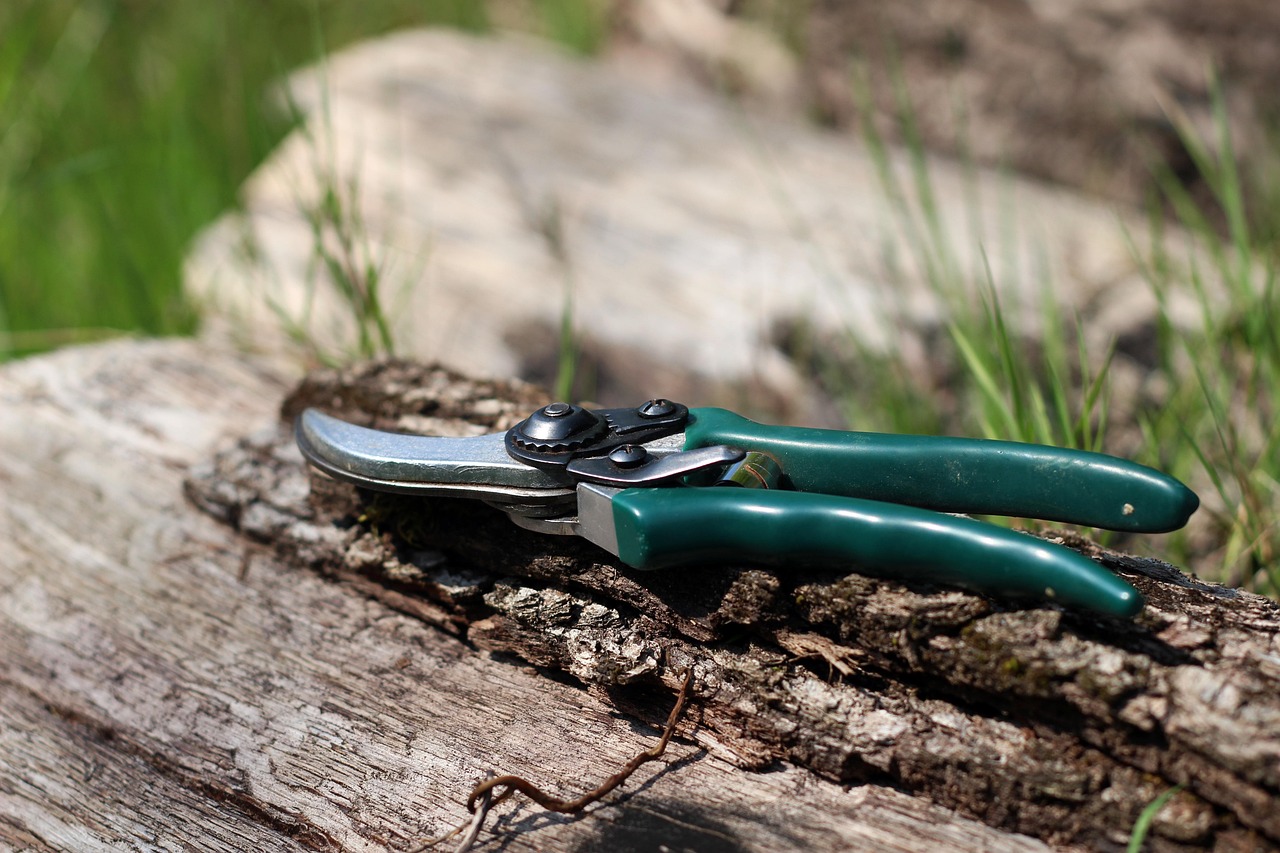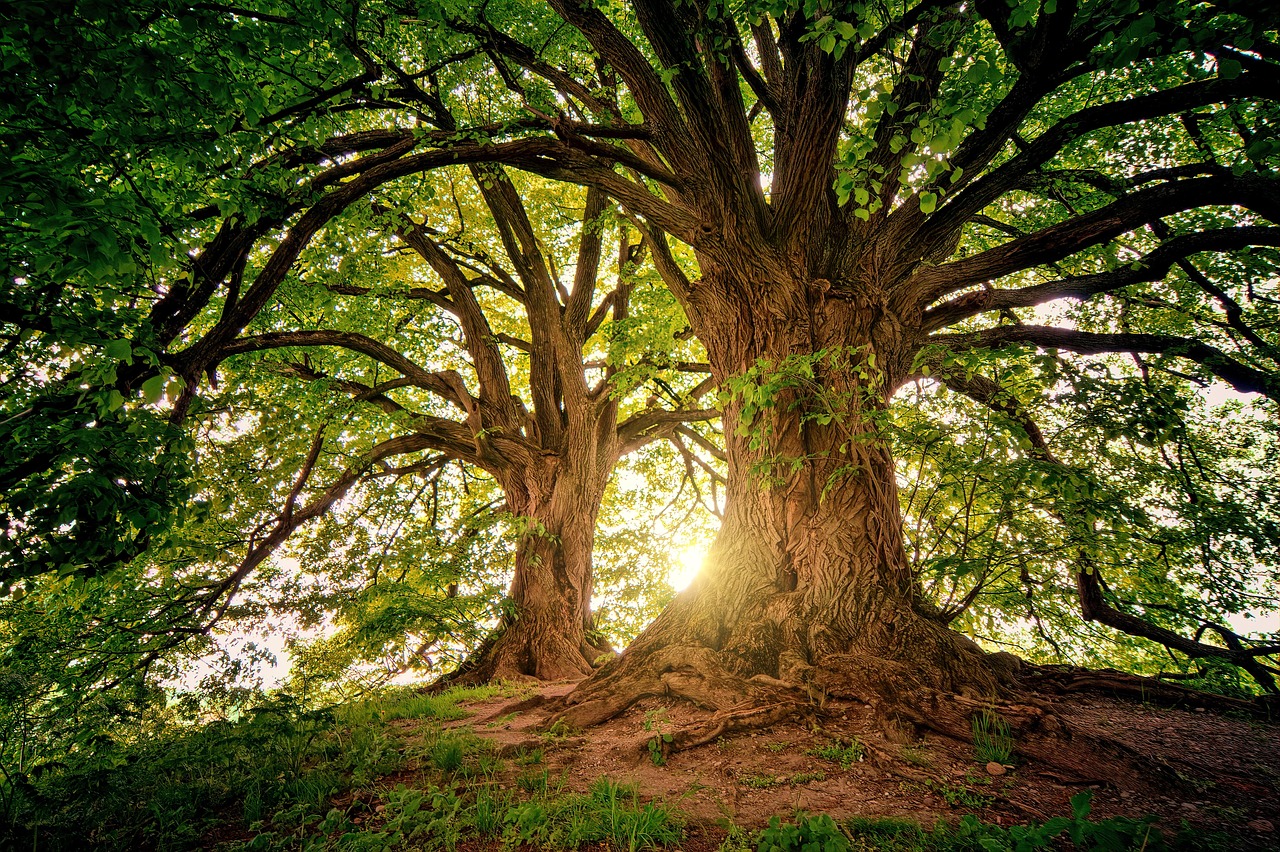Pruning is essential for improving air circulation in dense canopies. It removes excess foliage, allowing better airflow, reducing humidity, and minimizing the risk of disease. This practice promotes healthier plant growth and enhances overall productivity in gardens and orchards.
Dense canopies, such as those found in fruit orchards or densely planted gardens, often lead to poor air circulation. When plants are overgrown, the foliage can block airflow, creating a humid environment conducive to fungal diseases and pests. Proper pruning techniques can significantly enhance air movement within these canopies, providing numerous benefits for plant health and productivity.

Understanding the importance of air circulation is crucial for anyone managing a garden or orchard. Air circulation helps to regulate temperature and moisture levels, which are vital for the overall health of plants. When air moves freely through the canopy, it reduces the likelihood of conditions that promote diseases such as powdery mildew or leaf blight.
Benefits of Improved Air Circulation
Improving air circulation through pruning offers several advantages for plants and gardeners alike. Some of these benefits include:
- Reduced Disease Risk: Better airflow decreases humidity around the foliage, lowering the chances of fungal infections.
- Enhanced Photosynthesis: Improved light penetration allows lower leaves to receive more sunlight, promoting photosynthesis.
- Increased Fruit Quality: Fruits benefit from better air circulation, resulting in improved size and flavor.
- Boosted Growth Rates: Healthier plants generally grow faster and produce more robust yields.
In addition to these benefits, pruning can help manage plant shape and size. This is particularly important in maintaining an aesthetically pleasing garden or orchard. Properly pruned plants not only look better but are also easier to manage during the growing season.

Understanding Pruning Techniques
To effectively improve air circulation in dense canopies, it is essential to understand various pruning techniques. Each method serves a specific purpose and can be applied based on the type of plants being managed. Here are a few common techniques:
- Thinning: This technique involves selectively removing branches to create space within the canopy. It allows light and air to penetrate deeper, benefiting all parts of the plant.
- Heading Back: By cutting back a branch to a bud, this method encourages bushier growth while still allowing airflow through the canopy.
- Crown Reduction: Reducing the overall size of the plant helps maintain manageable dimensions while promoting better air circulation.
When implementing these techniques, timing is essential. The best time to prune most plants is during their dormant season. This minimizes stress on the plant and allows for quicker recovery in the spring. However, specific plants may have unique needs or optimal pruning times, so it’s important to research individual species before proceeding.
Tools Needed for Pruning
Having the right tools is critical for effective pruning. Using sharp and clean tools will ensure clean cuts, which are necessary for healthy plant recovery. Here are some essential tools for pruning:

| Tool | Purpose |
|---|---|
| Hand Pruners | Ideal for cutting small branches and stems. |
| Loppers | Suitable for cutting thicker branches that are too large for hand pruners. |
| Saws | Used for larger branches that require more power than loppers. |
| Gloves | Protect hands from cuts and scrapes during pruning. |
| Pole Pruner | Helps reach high branches without using a ladder. |
When using these tools, safety should always be a priority. Wearing protective gear and ensuring tools are well-maintained will help prevent accidents during pruning sessions. Proper technique not only leads to better results but also reduces the risk of injury.
In summary, pruning is a vital practice for enhancing air circulation in dense canopies. By employing effective pruning techniques, investing in the right tools, and understanding the benefits, gardeners and orchardists can promote healthier plant growth while minimizing disease risk. As we explore this topic further, we will delve into specific strategies tailored for various plant types and environmental conditions.
Identifying Dense Canopies
Before initiating pruning, it is essential to identify what constitutes a dense canopy. Dense canopies are characterized by an abundance of foliage that often leads to overcrowding. This overcrowding can hinder airflow, light penetration, and overall plant health. Understanding the signs of a dense canopy will help in determining when and how to prune effectively.

Some common indicators of a dense canopy include:
- Limited Light Exposure: Lower branches receive little to no sunlight, leading to weak growth.
- High Humidity Levels: The interior of the canopy remains moist for extended periods, increasing the risk of diseases.
- Pest Infestations: Increased insect activity due to poor air circulation, which can attract pests.
- Stunted Growth: Plants may stop growing or exhibit poor fruit production due to insufficient resources.
Recognizing these signs early can help gardeners take proactive measures to maintain healthy plants. Regularly assessing plant health and canopy density allows for timely interventions.
Timing Your Pruning
The timing of pruning is crucial for achieving the best results. Different plants have varying growth cycles, which affect when they should be pruned. Here are general guidelines for timing your pruning:
- Late Winter to Early Spring: Most deciduous trees and shrubs benefit from pruning during their dormant season. This helps minimize stress and encourages healthy growth in the spring.
- Post-Bloom: Some flowering plants should be pruned immediately after blooming. This ensures that new growth occurs before the next flowering cycle.
- Summer Pruning: Light pruning during the summer can help control growth and improve air circulation without causing significant stress to the plant.
It is important to research specific plant species as individual needs may vary. Additionally, pruning at the wrong time can lead to reduced flowering or fruiting in some plants.
Pruning Techniques for Different Plant Types
Different plants require specific pruning techniques to optimize their growth and health. Understanding these techniques ensures that each plant receives the care it needs. Here are some common plant types and their recommended pruning methods:
Trees
Trees typically need a combination of thinning and heading back techniques. Thinning removes excess branches, while heading back promotes new growth. When pruning trees, consider the following:
- Remove dead or diseased branches first.
- Aim to create an open center to allow sunlight and air movement.
- Avoid removing more than 25% of the tree’s canopy in one season.
Shrubs
Shrubs may require different approaches depending on whether they bloom on old or new wood. For example:
- Old Wood Bloomers: Prune immediately after flowering to avoid removing next year’s blooms.
- New Wood Bloomers: Prune during winter or early spring before new growth begins.
Fruit Plants
Fruit-bearing plants also have specific pruning needs that are crucial for maximizing yield. Pruning techniques include:
- Crown Thinning: This technique improves air circulation and light penetration, enhancing fruit quality.
- Summer Pruning: Reduces excessive growth and encourages fruit production.
The Role of Mulching in Air Circulation
While pruning significantly improves air circulation, other practices like mulching can further enhance the environment around plants. Mulching involves applying a layer of material on the soil surface, and it offers several benefits:
- Moisture Retention: Mulch helps retain soil moisture, reducing the need for frequent watering.
- Temperature Regulation: It moderates soil temperature, creating a stable environment for root growth.
- Disease Prevention: A thick layer of mulch can prevent soil-borne diseases from splashing onto plants during rain.
Choosing the right mulch material is also important. Organic mulches, such as wood chips or straw, decompose over time, enriching the soil while inorganic mulches like stones provide stability without adding nutrients.
Monitoring and Adjusting Practices
After implementing pruning and mulching techniques, ongoing monitoring is essential. Regularly assess plant health, noting any changes in growth patterns or signs of disease. Keeping a garden journal can help track what methods work best over time.
If certain areas of the canopy remain dense despite pruning efforts, consider adjusting your approach. Additional thinning or changing the timing of seasonal pruning may be necessary based on observed results.
By staying attentive to plant needs and making adjustments as required, gardeners can cultivate a thriving environment that promotes optimal air circulation and overall plant health.
Common Mistakes in Pruning
While pruning is a beneficial practice, there are common mistakes that gardeners often make, which can lead to undesirable outcomes. Avoiding these pitfalls is essential for maximizing air circulation and promoting healthy plant growth.
Over-Pruning
One of the most frequent mistakes is over-pruning, which involves removing too much foliage at once. This can lead to:
- Stress on the Plant: Removing a significant portion of the canopy can shock the plant, leading to stunted growth or even death.
- Reduced Photosynthesis: With less foliage, the plant has a decreased capacity to capture sunlight, hindering its ability to produce food.
- Poor Recovery: Plants may take longer to recover from heavy pruning, delaying new growth and fruit production.
Ignoring Plant Type and Growth Habit
Not all plants respond similarly to pruning. Each species has unique growth habits and needs. Ignoring these differences can result in:
- Improper Timing: Pruning at the wrong time for a specific type of plant can eliminate potential blooms or fruit.
- Incorrect Techniques: Using unsuitable methods can damage the plant or fail to achieve the desired outcome.
Seasonal Considerations for Pruning
The seasons play a crucial role in determining when and how to prune. Understanding seasonal changes will enhance the effectiveness of your pruning efforts.
Spring Pruning
Spring is often the time when most gardeners begin pruning. During this season, it is important to:
- Focus on Dead or Damaged Wood: Remove any branches that did not survive the winter.
- Encourage New Growth: Thinning can promote better air circulation and light penetration as plants begin to leaf out.
Summer Pruning
Summer pruning is primarily for maintenance and controlling growth. This technique includes:
- Light Thinning: Removing excess growth to improve airflow without stressing the plant.
- Pinching Back: Tipping back young shoots to promote bushier growth and prevent overcrowding.
Fall Pruning
Fall is usually not recommended for pruning; however, it is sometimes necessary for specific situations:
- Preparing for Winter: Remove any diseased or dead wood to help prevent pests from overwintering.
- Avoid Heavy Cuts: Heavy pruning should be avoided in fall as it can stimulate new growth that won’t survive the winter.
Understanding Canopy Architecture
A comprehensive understanding of canopy architecture is essential for effective pruning. The structure of a plant’s canopy influences how light and air move through it. Here are some key concepts:
Lateral Branching
Lateral branches are important for balancing growth and maintaining overall plant health. Key points include:
- Encouraging Horizontal Growth: Promoting lateral branching helps create an open canopy that improves light penetration.
- Avoiding Vertical Growth: Focusing only on height can lead to dense upper canopies that restrict airflow below.
Crown Management
The crown of a tree is where most foliage resides, which plays a significant role in air circulation. Effective crown management includes:
- Aiming for an Open Center: An open-center crown allows air to flow freely through the canopy.
- Removing Competing Leaders: Ensuring one dominant leader promotes a more stable structure and better airflow.
The Impact of Soil Health on Pruning Effectiveness
The health of the soil directly affects plant vitality and, consequently, the effectiveness of pruning practices. Healthy soil supports robust root systems and encourages vigorous growth. Here are some factors to consider:
Nutrient Availability
Nutrient-rich soil promotes stronger plants that can withstand pruning stress. Key nutrients include:
- Nitrogen: Essential for leafy growth, helping plants recover quickly post-pruning.
- Phosphorus: Supports root development and flowering, enhancing overall plant health.
- Potassium: Improves drought resistance and aids in plant recovery after pruning.
Soil Structure
A well-structured soil promotes healthy root systems, which in turn supports canopy health. Considerations include:
- Aeration: Ensures roots receive adequate oxygen, vital for overall plant health.
- Water Retention: Good soil structure helps maintain moisture levels, reducing stress during dry periods.
Utilizing Technology in Pruning Practices
The advancement of technology has introduced new tools and methods for monitoring and improving pruning practices. Here are some technologies that can aid in effective canopy management:
Drones
Drones equipped with cameras can provide aerial views of canopies, allowing gardeners to assess density and health from above. Benefits include:
- Disease Detection: Early identification of problem areas within the canopy.
- Mapping Canopy Structure: Aiding in planning pruning strategies based on actual conditions.
Sensors
Sensors can monitor various environmental factors affecting plant health. Key features include:
- Soil Moisture Sensors: Providing real-time data to inform watering and pruning schedules.
- Aerial Imaging Sensors: Offering insights into plant health through color and temperature variations.
By leveraging these technologies, gardeners can make informed decisions regarding their pruning practices, leading to improved air circulation and healthier plants overall.
Best Practices for Pruning in Dense Canopies
To ensure effective pruning for improved air circulation, several best practices should be followed. These practices can maximize the benefits of pruning while minimizing stress on plants. Below are key recommendations:
- Plan Before You Prune: Assess the overall health of your plants and develop a clear strategy. Identify which areas require attention based on density, light exposure, and growth patterns.
- Use Clean, Sharp Tools: Always start with sanitized equipment to prevent the spread of diseases. Sharp tools make cleaner cuts, which promote faster healing.
- Prune Gradually: If a plant is overly dense, consider spreading out pruning over multiple seasons rather than attempting to correct it all at once.
- Monitor Plant Response: After pruning, keep an eye on how the plants react. Look for new growth patterns, signs of stress, or disease development.
- Educate Yourself: Stay informed about the specific needs of the plants in your care. Different species may require unique approaches to pruning.
By adhering to these best practices, gardeners can cultivate a more balanced and healthy environment within their gardens or orchards. Additionally, these practices can further enhance air circulation, contributing to reduced disease risk and improved plant vitality.
Environmental Considerations
Pruning does not exist in isolation; it is part of a larger ecosystem. Understanding environmental factors that impact plant health can lead to better outcomes. Here are some key considerations:
Climate Impact
The local climate significantly influences how and when you should prune. Factors such as temperature, humidity, and rainfall patterns can affect plant growth and recovery times. For example:
- Warmer Climates: In regions with prolonged growing seasons, lighter summer pruning may help manage growth without compromising yield.
- Cooler Climates: In colder areas, pruning during late winter ensures that cuts heal before new growth begins.
Soil and Water Management
Healthy soil is integral to plant health and can influence the effectiveness of pruning. Ensuring proper drainage and nutrient availability supports robust root systems. Additionally:
- Watering Practices: Consistent moisture levels are essential for recovery after pruning. Be cautious not to overwater or underwater plants following pruning.
- Soil Amendments: Use organic matter to enrich the soil, providing essential nutrients that help plants recover from pruning stress.
Case Studies: Successful Pruning Strategies
Real-world examples can provide valuable insights into effective pruning strategies for improved air circulation. Here are a couple of case studies:
Case Study 1: Apple Orchard Management
An apple orchard faced issues with poor air circulation leading to increased disease pressure. The management team implemented a comprehensive pruning plan focusing on thinning out dense areas and promoting an open canopy structure. They noticed significant improvements in:
- Bacterial infection rates decreased by over 30%.
- The quality of apples improved, with larger sizes and better flavor profiles noted in the following harvest.
Case Study 2: Urban Garden Transformation
A community urban garden struggled with overcrowded vegetable beds leading to poor yields. The volunteers organized a pruning workshop to teach proper techniques. By applying strategic thinning and heading back methods, they achieved:
- A 50% increase in vegetable production during the next growing season.
- Enhanced air circulation that reduced pest infestations significantly.
Final Thoughts
Pruning for improved air circulation in dense canopies is a multifaceted approach that requires knowledge, skill, and attention to detail. Throughout this article, we have explored the importance of understanding plant needs, recognizing signs of dense canopies, employing effective pruning techniques, and utilizing technology to enhance practices.
The benefits of proper pruning extend beyond simple aesthetics; they play a crucial role in maintaining plant health, increasing productivity, and reducing disease risk. By implementing the best practices outlined here, gardeners and orchardists can create thriving environments that support robust growth and resilience.
Ultimately, successful pruning is not just about cutting branches; it is about fostering a holistic understanding of plant care within the broader ecosystem. By staying informed and adaptable, gardeners can navigate the complexities of canopy management effectively, ensuring that their plants flourish for years to come.
